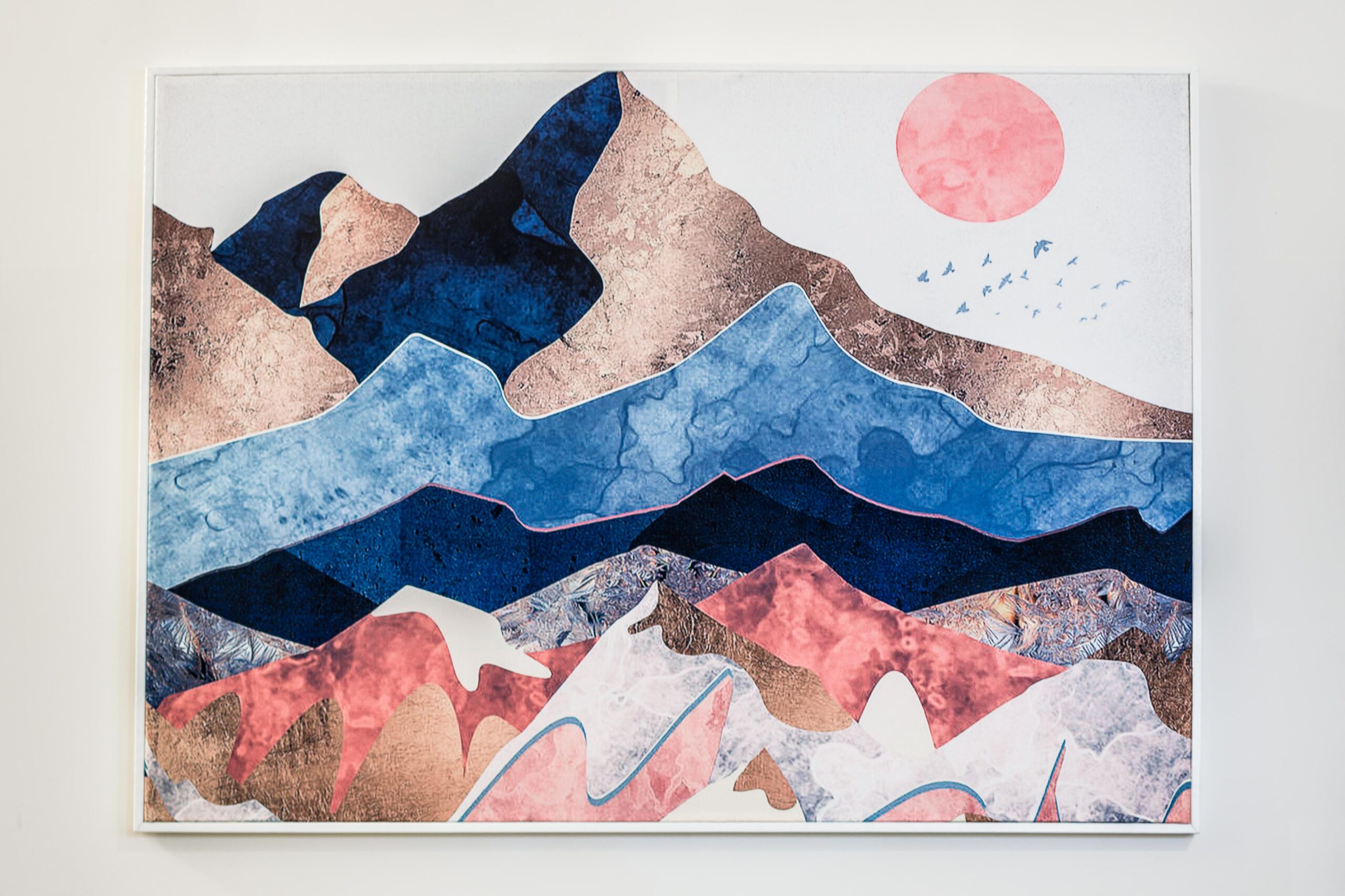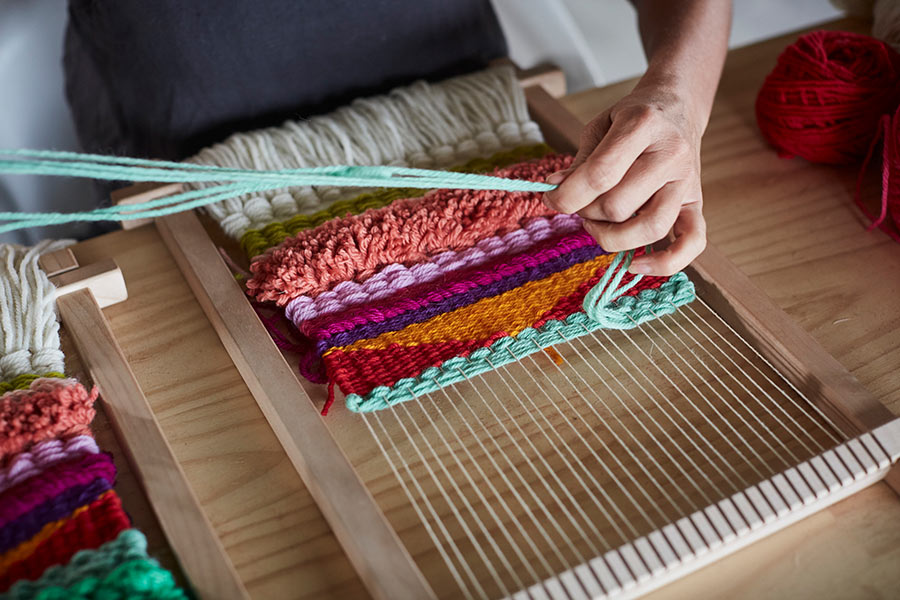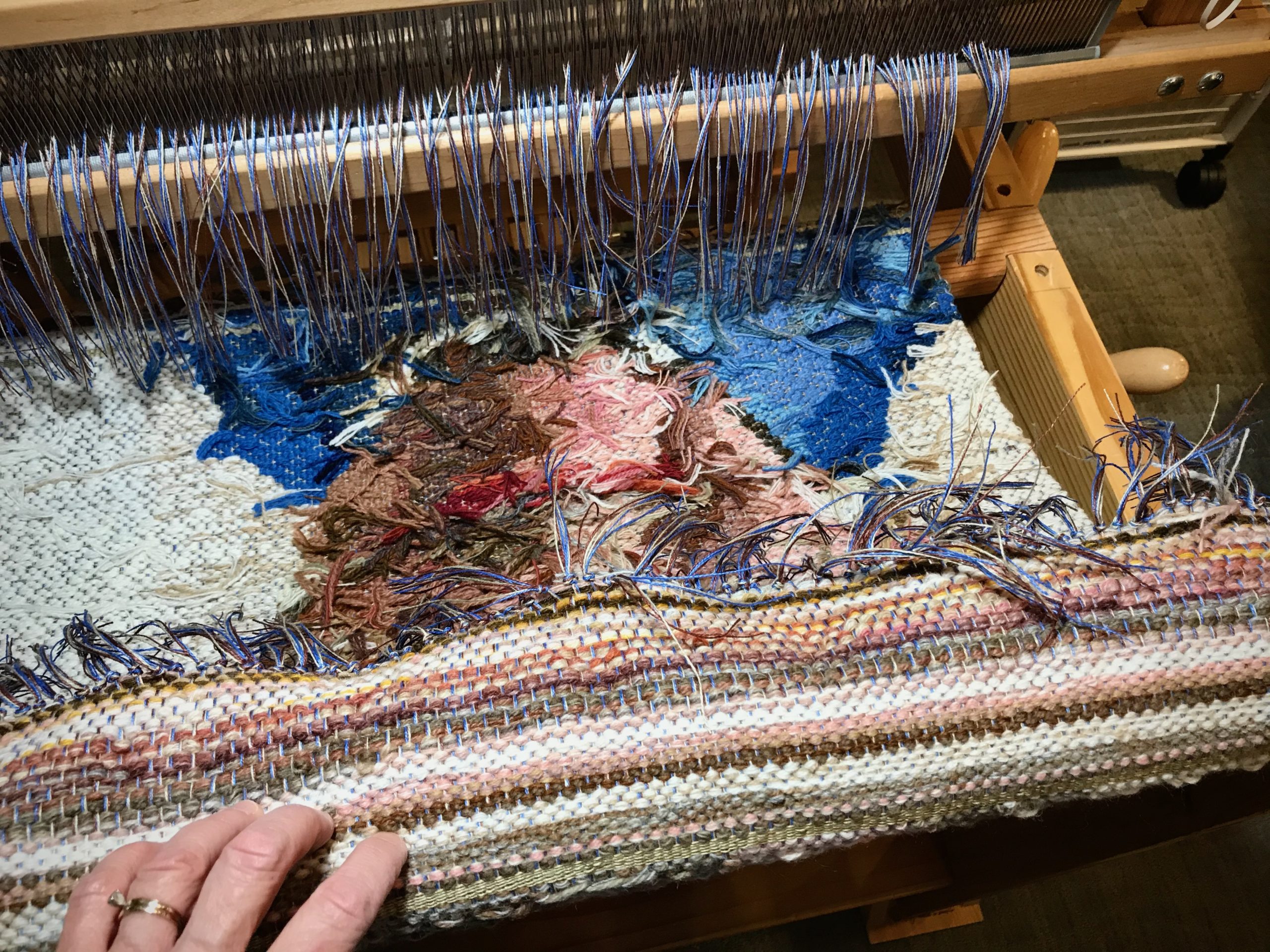How to Make a Tapestry? To make a tapestry, select a sturdy loom, choose your desired yarn or thread, weave the design by threading the yarn through the warp threads, and secure the ends to create a beautiful textile art piece.
Tapestry weaving is a beautiful and intricate art form that has been practiced for centuries. It involves creating a textile piece by weaving together different colored threads on a loom. The end result is a stunning work of art that can be displayed in your home or given as a thoughtful gift.
There are many benefits to making your own tapestry. Not only does it allow you to express your creativity and create something unique, but it also provides a sense of accomplishment and relaxation. Weaving can be a meditative process, allowing you to focus on the present moment and let go of any stress or worries.
In this article, I will guide you through the process of how to make a tapestry, from choosing materials and tools to finishing techniques and troubleshooting common problems. Whether you are new to weaving or have some experience, I hope this article will inspire you to start your own tapestry project.
Key Takeaways
- Tapestry weaving is a fun and rewarding craft that anyone can learn.
- To get started, you’ll need a few basic materials and tools, including a loom, yarn, and a tapestry needle.
- Choosing a design for your tapestry is an important step, and you can find inspiration in everything from nature to abstract art.
- Once you’ve set up your loom, you can start weaving using basic techniques like the plain weave and the soumak stitch.
- With practice, you can create intricate shapes and textures in your tapestry, add color, and finish it off for display or gift-giving.
Introduction to Tapestry Weaving
Tapestry weaving has a rich history that dates back thousands of years. It was practiced by ancient civilizations such as the Egyptians, Greeks, and Persians, who used tapestries not only for decorative purposes but also as storytelling devices.
There are different types of tapestries that vary in size, complexity, and purpose. Some tapestries are small wall hangings meant for personal enjoyment while others are large-scale pieces created for public spaces or special occasions.
Before diving into the world of tapestry weaving, it’s important to familiarize yourself with some basic terminology. Warp refers to the vertical threads on the loom while weft refers to the horizontal threads that are woven through the warp. The warp creates the structure of the fabric while the weft adds color and design elements.
Materials and Tools Needed for Tapestry Weaving
To get started with tapestry weaving, you will need several materials including yarns or fibers in various colors and textures. Choose yarns that are suitable for weaving and consider the desired effect you want to achieve. Experiment with different fibers such as wool, cotton, silk, or even unconventional materials like ribbon or fabric strips.
In addition to yarns, you will need a loom to hold your warp threads in place. There are different types of looms available including frame looms, rigid heddle looms, and floor looms. Choose a loom that suits your needs and budget.
Other necessary tools and equipment include tapestry needles for weaving in the weft threads, scissors for cutting yarns, a shuttle or bobbin for holding the weft thread while weaving, and a comb or fork for beating down the weft rows.
Choosing a Design for Your Tapestry
| Design Aspect | Importance | Considerations |
|---|---|---|
| Color Scheme | High | Consider the room’s existing color palette and choose complementary or contrasting colors accordingly. |
| Pattern | High | Choose a pattern that fits the room’s overall aesthetic and complements other patterns in the space. |
| Size | Medium | Consider the size of the wall or space where the tapestry will be hung and choose a size that fits proportionally. |
| Material | Medium | Choose a material that fits the room’s overall aesthetic and complements other textures in the space. |
| Subject Matter | Low | Choose a subject matter that fits personal taste and complements the room’s overall aesthetic. |
Finding inspiration for your tapestry design can come from various sources such as nature, art history, personal experiences, or even dreams. Take some time to explore different ideas and sketch out rough designs before settling on one.
Once you have chosen a design idea, it’s helpful to create a more detailed plan by sketching it out on graph paper. This will allow you to visualize how the design will translate onto the woven fabric.
Transferring your design onto the loom can be done using various methods such as tracing it onto the warp threads with pencil or using temporary markers like chalk or water-soluble pens.
Setting Up Your Loom for Weaving
Before you can start weaving your tapestry, you need to set up your loom properly. This involves preparing the warp threads which will form the foundation of your tapestry.
To prepare the warp threads, measure out an appropriate length of yarn based on how large you want your tapestry to be plus extra length for tying off at both ends. Attach one end of each warp thread securely to one side of the loom using knots or clamps.
Once all warp threads are attached, carefully wind them onto the loom, making sure they are evenly spaced and under tension. This process can be time-consuming and requires patience to ensure a well-prepared warp.
Basic Weaving Techniques for Tapestry
Weft-faced weaving is the most common technique used in tapestry weaving. It involves packing the weft threads tightly together to create a dense fabric with minimal warp showing through.
Basic tapestry stitches include the plain weave, which alternates over and under each warp thread, and the slit stitch, which allows you to change colors or create shapes by weaving around existing weft threads.
As you gain more experience with tapestry weaving, you can experiment with different techniques for creating shapes and curves in your design. This can be achieved by manipulating the weft threads or using techniques such as hatching or dovetailing.
Creating Shapes and Textures in Your Tapestry
Creating shapes and textures in your tapestry adds depth and visual interest to your design. Techniques such as interlocking wefts or wrapping yarns around warp threads can help create smooth curves or sharp angles.
Adding texture to your tapestry can be done by incorporating different weaving techniques such as rya knots (a type of pile weave), soumak (a decorative braid-like stitch), or creating loops with extra yarns.
You can also experiment with incorporating other materials into your tapestry such as beads, feathers, or even found objects like shells or twigs. These additions can add a unique touch to your piece and make it truly one-of-a-kind.
Adding Color to Your Tapestry
Choosing a color palette for your tapestry is an important step in the design process. Consider how different colors interact with each other and how they will enhance your overall design concept.
Techniques for blending and shading colors include using multiple strands of yarn together to create a variegated effect or gradually changing shades by using different yarns in the same color family.
Creating color gradients can be achieved by gradually changing the weft threads from one color to another, creating a smooth transition between colors. This technique adds depth and dimension to your tapestry.
Finishing Your Tapestry: Removing it from the Loom
Once you have completed weaving your tapestry, it’s time to remove it from the loom and finish it off. Start by cutting the warp threads at both ends of the loom, leaving enough length for securing and finishing.
To secure the ends of your tapestry, tie off each warp thread individually or use a hem stitch along both edges. This will prevent unraveling and ensure that your tapestry stays intact.
Blocking and finishing techniques involve gently washing or steaming your tapestry to even out any tension or irregularities in the fabric. This step helps give your piece a polished look and ensures that it hangs properly when displayed.
Tips for Displaying and Caring for Your Tapestry
When displaying your finished tapestry, consider factors such as lighting, wall space, and overall aesthetic of the room. You can hang it on a wall using a rod or frame or display it on a stand if you prefer a freestanding option.
Caring for your tapestry involves regular dusting with a soft brush or vacuuming with low suction to remove any dirt or debris that may accumulate over time. Avoid exposing your tapestry to direct sunlight as this can cause fading of colors over time.
Troubleshooting Common Tapestry Weaving Problems
As with any craft, there are common problems that may arise during the process of weaving a tapestry. Warp tension issues can cause uneven edges or puckering in the fabric. Adjusting tension while weaving can help alleviate these problems.
Uneven edges can be caused by inconsistent beating down of weft rows or not maintaining an even tension throughout weaving. Paying attention to these details and making adjustments as needed can help create a more polished finished piece.
Weaving mistakes such as skipped warp threads or uneven weft rows can be fixed by carefully undoing the affected area and reweaving it correctly. It’s important to have patience and not get discouraged by these setbacks, as they are part of the learning process.
Resources for Further Learning and Inspiration in Tapestry Weaving
If you’re interested in further exploring tapestry weaving, there are many resources available to help you expand your knowledge and find inspiration. Books such as “The Tapestry Handbook” by Carol K. Russell or “Tapestry Weaving: A Comprehensive Study Guide” by Nancy Harvey provide detailed instructions and techniques for all skill levels.
Websites like The American Tapestry Alliance (americantapestryalliance.org) offer online courses, tutorials, and a community forum where you can connect with other tapestry weavers from around the world.
Attending tapestry weaving events or joining local weaving guilds can also provide opportunities for learning from experienced weavers, participating in workshops, and gaining exposure to different styles of tapestries.
In conclusion, tapestry weaving is a rewarding craft that allows you to express your creativity while creating beautiful works of art. From choosing materials and tools to finishing techniques and troubleshooting common problems, this article has provided an overview of the process involved in creating your own tapestries.
I hope this article has inspired you to start your own tapestry weaving project. Remember that practice makes perfect, so don’t be discouraged if your first attempts don’t turn out exactly as planned. With time and dedication, you will develop your skills as a weaver and create unique pieces that reflect your personal style.
So gather your materials, set up your loom, let the creative juices flow through your fingertips, and embark on this wonderful journey of tapestry weaving. Happy weaving!
FAQs
What is tapestry?
Tapestry is a form of textile art that involves weaving a design or picture on a loom using different colored threads.
What materials do I need to make a tapestry?
To make a tapestry, you will need a loom, yarn or thread, a needle, and scissors. You may also need a tapestry needle, which has a larger eye and blunt tip to make it easier to weave through the threads.
What are the different types of looms?
There are several types of looms, including frame looms, rigid heddle looms, and floor looms. Frame looms are the simplest and most affordable option for beginners.
What are the basic steps to making a tapestry?
The basic steps to making a tapestry include setting up the loom, creating a design, threading the warp (vertical) threads, and weaving the weft (horizontal) threads through the warp threads to create the design.
What are some tips for creating a design?
When creating a design, it is important to consider the size of the tapestry, the colors and textures of the yarn, and the level of detail you want to include. It can be helpful to sketch out your design on paper before starting to weave.
How long does it take to make a tapestry?
The time it takes to make a tapestry depends on the size and complexity of the design, as well as your level of experience. A small, simple tapestry may take a few hours to complete, while a larger, more intricate tapestry may take several weeks or even months.
What are some common tapestry weaving techniques?
Common tapestry weaving techniques include plain weave, soumak weave, and slit weave. Plain weave involves weaving the weft thread over and under each warp thread. Soumak weave involves wrapping the weft thread around each warp thread to create a braided effect. Slit weave involves weaving the weft thread over and under pairs of warp threads to create a slit in the fabric.
Originally posted 2024-01-02 04:33:44.




